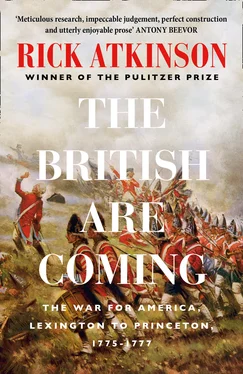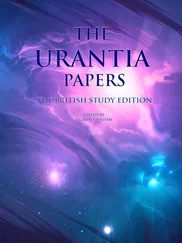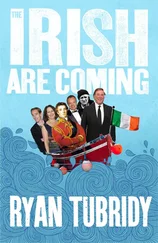40. Archibald Robertson, View of the Narrows between Long Island & Staten Island with our fleet at anchor , etc. , ink and wash on paper, 1776. (Courtesy New York Public Library, Spencer Collection)
41. Allan Ramsay, Flora Macdonald , oil on canvas, 1749. (Ashmolean Museum of Art and Archeology, University of Oxford)
42. Sir Henry Clinton , date unknown. (Courtesy Print Collection, New York Public Library)
43. Gen. Lord Cornwallis , date unknown. (Courtesy Print Collection, New York Public Library)
44. Major Gen.l Charles Lee , date unknown. (Courtesy Print Collection, New York Public Library)
45. Charles Willson Peale, William Moultrie , oil on canvas, 1782. (National Portrait Gallery, Smithsonian Institution. Transfer from the National Gallery of Art, gift of the A. W. Mellon Educational and Charitable Trust, 1942)
46. Slave auction notice, 1760. (“The Atlantic Slave Trade and Slave Life in the Americas,” website for Virginia Foundation for the Humanities. Original source: Library of Congress, Prints and Photographs Division, LC-USZ62-10293)
47. Thomas Leitch, A view of Charles-Town, the capital of South Carolina , engraved by Samuel Smith, 1776. (Courtesy Library of Congress)
48. Nicholas Pocock, A View of the Attack Made by the British Fleet under the Command of Sir Peter Parker , etc., oil on canvas, 1783. (South Caroliniana Library, University of South Carolina)
49. Charles Édouard Armand-Dumaresq, The Declaration of Independence of the United States of America, July 4, 1776 , oil on canvas, c. 1873.
50. Laurent Dabos, Thomas Paine , oil on canvas, c. 1792. (Courtesy National Portrait Gallery, Smithsonian Institution)
51. James Wallace and Dominic Serres, The Phoenix and the Rose engaged by the enemy’s fire ships and galleys on the 16 Augst. 1776 , engraving, 1778. (Courtesy Print Collection, New York Public Library)
52. Alonzo Chappel, Battle of Long Island , oil on canvas, 1858. (Brooklyn Historical Society)
53. Bushnell’s American Turtle , engraving, 1881. (Courtesy Library of Congress)
54. Thomas Mitchell, Forcing a passage of the Hudson River, 9 October 1776 , oil on canvas, date unknown, copy of original by Dominic Serres the Elder. (© National Maritime Museum, Greenwich, London)
55. Robert Cleveley, The British landing at Kip’s Bay, New York Island, 15 September 1776 , pen and ink, black and watercolor, 1777. (© National Maritime Museum, Greenwich, London)
56. The Battle of Harlem Heights, September 16, 1776 , date unknown. (Courtesy Print Collection, New York Public Library)
57. Charles Willson Peale, Nathanael Greene , watercolor on ivory, 1778. (Courtesy Metropolitan Museum of Art, bequest of Charles Allen Munn, 1924)
58. Luther G. Hayward, Colonel Roger Morris’ House , 1854. (© The Morris-Jumel Mansion, gift of Lydia Malbin)
59. John Trumbull, General John Glover , graphite, 1794. (Courtesy Yale University Art Gallery)
60. William Glanville Evelyn , frontispiece portrait, artist unknown, 1775. (From G. D. Scull, ed., Memoirs and Letters of Captain W. Glanville Evelyn , 1879)
61. Thomas Davies, The landing of the British forces in the Jerseys on the 20th of November 1776 , etc., watercolor, 1776. (Courtesy Print Collection, New York Public Library)
62. Jean-Marc Nattier, Portrait of Pierre-Augustin Caron de Beaumarchais , oil on canvas, 1755. (ART Collection/ Alamy Stock Photo)
63. Jean-Baptiste Raguenet, A View of Paris from the Pont Neuf , oil on canvas, 1763. (Courtesy Getty Center, Open Content Program, J. Paul Getty Museum)
64. Silas Deane , date unknown. (Courtesy Print Collection, New York Public Library)
65. Joseph Duplessis, Portrait of Louis XVI, King of France and Navarre , oil on canvas, c. 1776-78.
66. Antoine-François Callet, Charles Gravier Comte de Vergennes , engraving by Vincenzio Vangelisti, c. 1774 – 89. (Courtesy Library of Congress)
67. Charles Willson Peale, Dr. Benjamin Rush , oil on canvas, 1783 – 86. (Winterthur Museum, gift of Mrs. Julia B. Henry)
68. Thomas Sully, The Passage of the Delaware , oil on canvas, 1819. (Photograph © Museum of Fine Arts, Boston; gift of the Owners of the Old Boston Museum)
69. John Sullivan , wood engraving, date unknown. (Courtesy Print Collection, New York Public Library)
70. Brig. Gen. Joseph Reed , date unknown. (Courtesy Print Collection, New York Public Library)
71. John Trumbull, The Capture of the Hessians at Trenton, December 26, 1776 , oil on canvas, 1786 – 1828. (Courtesy Yale University Art Gallery)
72. “Plan of Princeton, Dec. 31, 1776,” manuscript map, pen and ink. (Courtesy Library of Congress)
73. Major Gen. James Grant, Colonel of the 55th Foot , date unknown. (Courtesy Print Collection, New York Public Library)
74. John Trumbull, Gen. Hugh Mercer , copy of an original pencil sketch created in 1791. (Courtesy Print Collection, New York Public Library)
75. John Trumbull, Death of General Mercer at the Battle of Princeton , sketch for The Battle of Princeton , pen and ink wash, 1786. (Courtesy Battle of Princeton Prints Collection, GC047, Graphic Arts Collection, Department of Rare Books and Special Collections, Princeton University Library)
76. James Peale, The Battle of Princeton , oil on canvas, c. 1782. (Princeton University Art Museum/Art Resource, NY)
Prologue
ENGLAND, JUNE 1773–MARCH 1775
Inspecting the Fleet
At three-thirty a.m. on June 22, 1773, fifteen minutes before sunrise, a royal chaise pulled by four matched horses burst from the gates of Kew Palace, escorted by cavalry outriders in scarlet coats. South they rode, skirting the Thames valley west of London before rattling onto the Surrey downs. Pearly light seeped into the landscape, and the brilliant green of an English summer day—the first full day following the solstice—emerged from the fens and fields. Even at this early hour the roads were crowded, for all England knew that a great review was planned at the royal dockyards in Portsmouth, a four-day celebration of the fleet that a decade before had crushed France and Spain in the Seven Years’ War to give rise to the British Empire. An exasperated message to the Admiralty headquarters in London earlier this week had warned of “it being almost impossible to get horses on the road owing to the multitude of people going to Portsmouth.” That throng, according to a newspaper account, included “admirals, captains, and honest Jack Tars in abundance … courtiers and parasites, placemen and pensioners, pimps and prostitutes, gamblers and pickpockets.” Innkeepers on the south coast were said to demand ten guineas a night for a bed.
The king himself, a demon for details, had choreographed this seven-hour journey from Kew, arranging the postilions, footmen, and grooms like chess pieces. He had calculated the distance and duration of each leg along the sixty-three-mile route, writing memoranda in his looping, legible hand, adorned only with a delicate filigree of ink that rose from each final lowercase d —as in “God”—to snake back across the paper like a fly fisherman’s line. Nine relays of horses waited along the route in places called Ripley and Godalming, but none at Lotheby Manor on the Portsmouth road, perhaps because an ancient English custom required that if a monarch visited Lotheby, the lord of the manor was “to present His Majesty with three whores.” Or so the London Chronicle claimed.
Читать дальше












